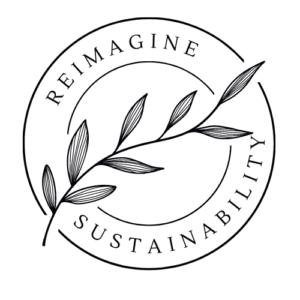Disclaimer: I am not a medical professional, the content of this article is not intended to be a substitute for professional medical advice and should not be relied on as health or personal advice.
Climate anxiety is on the rise. It is not surprising because the news and social media flood us with the information that the target of keeping global temperature levels below 1.5 degrees is not realistic any longer. Around the world, people are already affected by climate-related impacts like unusual heavy rainfall, rising sea levels, droughts etc.
Living with climate anxiety is the new normal.
The media and inaction of governments and heavily polluting industries constantly remind us that we are on a trajectory of downfall – socially, environmentally and economically. Instead of looking forward to a bright future, we assume that the end of the world we know is near. But is it really true? What is climate anxiety? Is there anything we can do about it?
Related:
Challenging Your Assumptions And Beliefs: 7 Effective Approaches
In this article, I explain what climate anxiety is and how you can get hold of it with easy-to-implement actions. The important thing first: You do not have to suffer in silence or alone.
What is climate anxiety?
Climate anxiety, also known as eco-anxiety or solastalgia, is a scientific explanation that defines the distress we feel related to our worries about the current and future effects of the climate crisis. Fear of environmental collapse is the primary cause of climate anxiety. Nonetheless, climate anxiety does not classify as a mental illness. According to this study, climate anxiety is a real issue that affects mostly children and young people. More than 59% of children and young people were very or extremely worried about their future.
Climate anxiety is rooted in the uncertainty about the future and the consequences of decades of poor leadership, environmental destruction and exploitation. Feelings associated with climate anxiety are frustration, anger, guilt and shame. Increasingly, people share on social media how climate anxiety affects their mood, behaviour and thinking of overwhelmedness and hopelessness. Some even report panic attacks as symptoms of climate anxiety due to fatalistic thinking patterns.
If you identify feelings of emotional distress due to the climate crisis, you should not underestimate them. Existential worries and fears fueled by natural disasters, forced migration, food insecurity, the rising cost of living and the rapid decline of mental health are legit. It also does not help that there is still a vast prevalence of climate denial and inaction in the media, from industries and governments.
I am one of those people with eco-anxiety. I am worried about the state of the world. There are days when those worries feel like a big block of cement on my chest. It is not easy, but there are ways to deal with those existential fears.
Let us continue with identifying typical thought patterns of climate anxiety.
Typical thought patterns which indicate climate anxiety
“It is too late and we do too little for any change. We cannot reach our global climate goals”
“The collapse is near and there is nothing I can do about it.”
“I feel overwhelmed by all that catastrophic news, not only about the climate crisis.”
“I start to wonder why to bother any longer.”
“Our governments are failing us and I lost all hope.”
All those thoughts are valid, but it is up to us to decide to what extent these thoughts influence us. Feeling overwhelmed, hopeless, pessimistic or distressed in times of immense uncertainty is a natural reaction. That’s about it: It is a reaction. As terrifying as the projections for our future sound, we still have the choice of how we deal with it.
Before I introduce you to the Climate Anxiety First Aid Kit, I would like to anticipate one thing: Your action is required. Although the future seems terrifying, there is only one remedy: your daily actions.
The world’s crises are human-made – not scientific or technical – problems. Therefore, humans are the solution providers. Even better, it does not have to be complicated or overwhelming. I will show you why.
The Climate Anxiety First Aid Kit
What can you do about your climate anxiety? There are things that are in or out of our control zone. I wrote a whole article about it and I recommend you to read it:
7 Powerful Ways To Focus On What Is In Your Control
Here are the simple tricks to calm your nerves during a climate anxiety episode:
Reflect on the position you are in. Do you have access to clean water and food? Do you have a roof over your head? You might know Maslow’s hierarchy of needs. The basis of the pyramid reflects the physiological needs like air, water, food, shelter, sleep and clothing. The second level refers to the criteria of safety needs like personal security, employment, resources and health.
This tip is not about telling you how well-off you are. Instead, I want to highlight that you have access to undervalued resources. Our issues are dealing with uncertainty, but there are three things in life that apply to all of us: pain, uncertainty and constant work (from the Netflix movie Stutz directed by Jonah Hill).
Change can only happen if we shift our mindsets, our outlook on life. It includes looking after everyone who is not in a privileged position.
Those who contribute least to climate change may be impacted most – including Indigenous peoples, refugees, people living in poverty, the unemployed, the homeless, the alienated, the very young and the very old.
Doctors for the Environment Australia
I know it is a big task, but where there’s a will there’s a way. It can seem like an isolating task. The opposite is the case which I want to show you in the next piece of advice.
Share your feelings. This is my favourite first-aid solution because it is so simple. We are not alone in this misery, you are not alone. Do not suffer in silence and share your worries with your loved ones.
If you do not feel like you have a safe space to share your worries, you are more than welcome to share them with me. Write to me here or write an email to info@reimaginesustainability.com (Disclaimer: I am not a medical professional, this option is not intended to be a substitute for professional medical advice and should not be relied on as health or personal advice.)
Sharing your feelings helps release dreary emotions. Therefore, feeling like you are not alone with your worries can be liberating. Another option is to share your worries with like-minded people via groups like the Climate Anxiety Support Groups on Facebook. There are many more groups out there, but I recommend you look for groups in your area.
Avoid news. It is a straightforward suggestion. I’m avoiding the news because it does not help me to achieve my desired impact. What we see on the news and social media is only a tiny fraction of what is happening around the world. Unfortunately, we see few success stories because we are all waiting for a breakthrough.
What I am going to share with you can be far-fetched and I welcome an appropriate discussion: I do not believe in a breakthrough technology that will solve our climate-related problems. Instead, I believe that if we put the needs of our Earth first, we create the change we need. Our needs depend on well-functioning ecosystems and learning to live within the planetary boundaries is a step we should make together.
Last but not least…
Action, action, action. There is just as much as we can do to make an impact. You are probably aware of the butterfly effect, a small change can impact a complex system. Now imagine: Millions of butterflies taking small actions – a colourful future can lie ahead of us. Prioritise what works instead of what does not. The beautiful thing about sustainability is that it is an eternal process. The Earth is constantly evolving, and so are we. A one size fits all solution does not exist. Therefore, all of us can have a say in creating a livable future.
Action from essential people – yes, you are one of them – will lead towards a future worth looking forward to. Does it sound too utopian? I do not know about you, but I feel more engaged to work towards a utopian future rather than an average one. The best thing is: we all have a place in the future, thus it is all our responsibility to create the best future we can.

Say goodbye to climate anxiety and hello to a future worth living for
What gets on my nerves is the repetitive narrative of how bad we are bad humans. All of us were born into a dysfunctioning world. Consequently, it is a lot of work to straighten that out again. Nevertheless, see it as an opportunity to become part of transforming our world. To make a difference and to really make our world the most liveable place in space. Because she is all we have.
We cannot create anything if we do not believe it is possible. It is as simple as that. Instead of continuing to dwell on the worst-case scenario, how about, we think about the best-case scenarios? We want to be healthy, be loved, be happy, and live with our loved ones without fear.
10 Simple Reasons Why It’s Not Too Late For Sustainability
How unimaginable is it to fix humanity! What if all the kind, nice, beautiful and loving people come together and put an end to all disasters? Again, I am aware that it sounds impossible – but hey, I also need to get my motivation from somewhere: Reimagining our world.
Before you continue spending your time on the World Wide Web, I hope you found a spark of hope. Imagine your future – a future you can look forward to. What does it look like? What does your everyday life look like? Who is part of it?
How does your future look like that is worth fighting for?





0 Comments